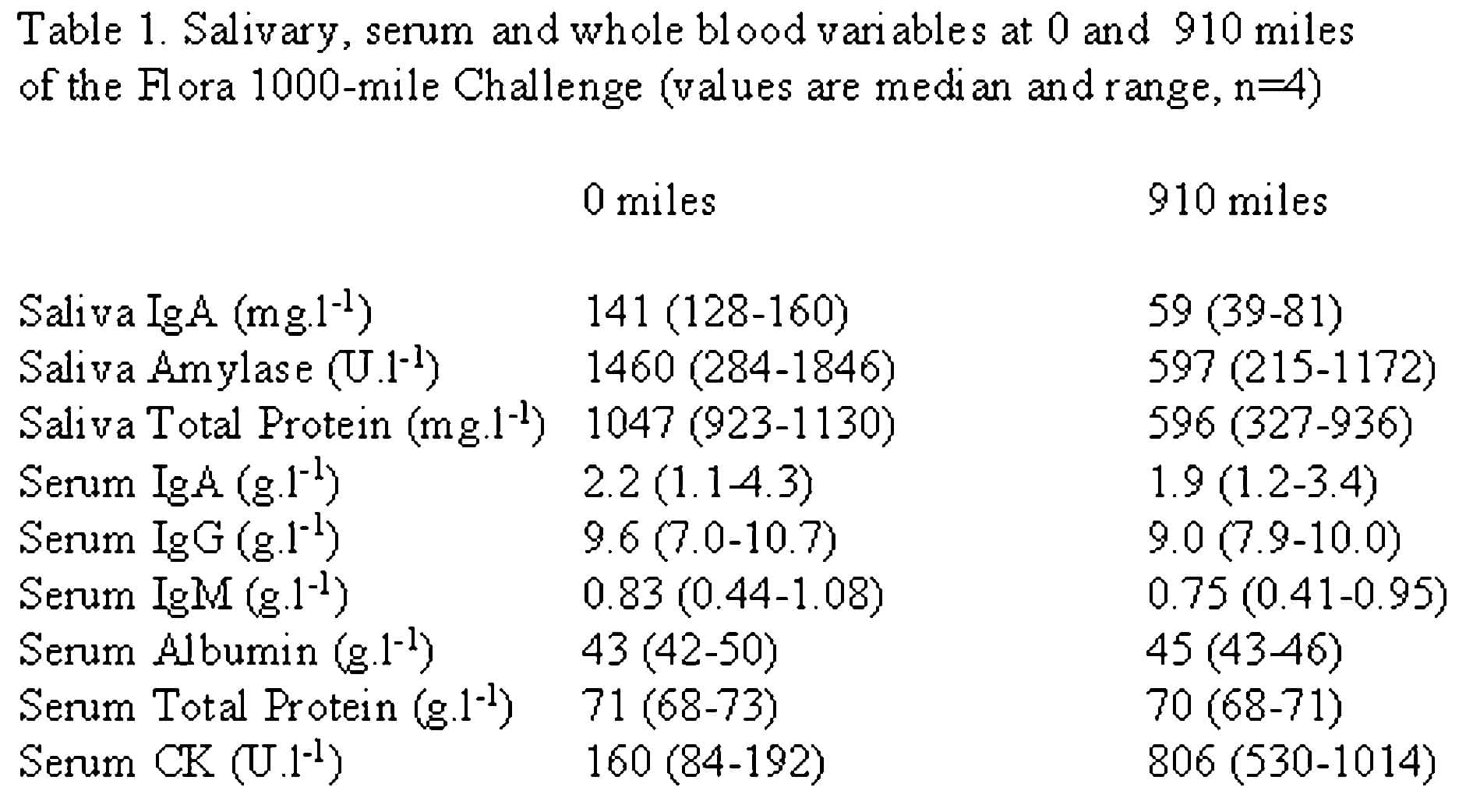An increased incidence of upper respiratory tract infections is often reported by individuals undertaking prolonged strenuous exercise or periods of heavy training (Gleeson, 2000; Mackinnon, 2000). It has been suggested that falls in salivary immunoglobulin A (IgA) may be a causal factor but it is not generally known if changes in mucosal secretory IgA reflect similar changes in circulating levels of IgA. The present study reports changes in salivary and serum immunoglobulins in individuals who completed the Flora 1000-mile Challenge. This was a repeat of the feat of endurance completed by Captain Robert Barclay in 1809 in which he covered, on foot, one mile every h for 1000 consecutive hours. This was, therefore, a challenge of endurance combined with frequently interrupted sleep. He successfully completed this feat (and won a bet of ú16, 000) by covering 2 miles at a time – one mile at the end of one h and one mile at the start of the next. This allowed him the maximum rest period of anything up to 105 min depending on how fast he walked or ran. In the present study 6 individuals attempted to repeat this feat; 5 completed it and 4 agreed to provide saliva samples and blood samples at 0, 250, 500, 750 and 910 miles.
Following approval by the East London and the City Research Ethics Committee, two healthy endurance-trained men (aged 25 and 56 years, body mass 81 and 82 kg, respectively) and two healthy endurance-trained women (aged 31 and 39 years, body mass both 50 kg) completed 1000 miles in 1000 h by adopting the same strategy as Barclay. The event began at 4 p.m. on 2nd March 2003 and ended 42 days later. The course was the same as that used for the 2003 London Marathon. Unstimulated saliva samples were obtained at rest before the Challenge and at rest (between exercise bouts) after completing 250, 500, 750 and 910 miles. Venous blood samples were obtained at 0, 500 and 910 miles. Saliva was analysed for IgA, amylase and total protein (Walsh et al. 1999) and serum samples were analysed for IgA, IgG, IgM, albumin, total protein and creatine kinase (CK). Various haematological measures including a differential leukocyte count and lymphocyte subsets were also recorded.
At baseline (0 miles), saliva IgA concentration was 141 (128-160) mg l-1 (median and range). Saliva IgA concentration declined progressively during the 1000-mile challenge and was 84 (53-137), 75 (67-99), 47 (35-89) and 59 (39-81) mg l-1 after completion of 250, 500, 750 and 910 miles, respectively. Saliva amylase activity and total protein also declined during the challenge (Table 1). In contrast, serum immunoglobulins (IgA, IgG and IgM), albumin and total protein concentrations remained relatively stable (Table 1). Leukocyte and lymphocyte subsets were virtually unchanged at 910 miles compared with baseline. Substantial elevations in circulating T (CD3+) cells, B (CD19+) cells and NK (CD3-CD56+) cells observed in 3 of the subjects at the 500-mile point.
These results indicate that salivary IgA concentration was decreased after 7 weeks of the challenge. In contrast, serum IgA concentration remained relatively stable.
This work was supported by the Flora London Marathon

